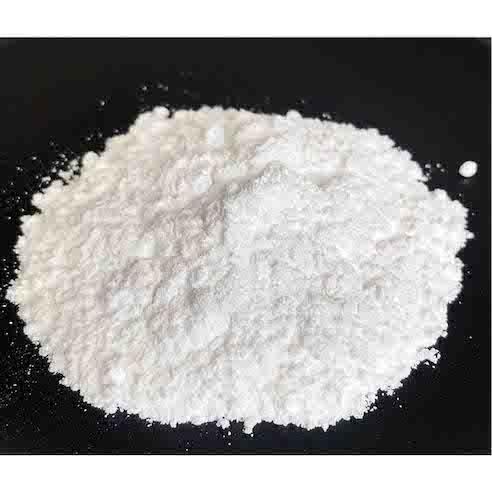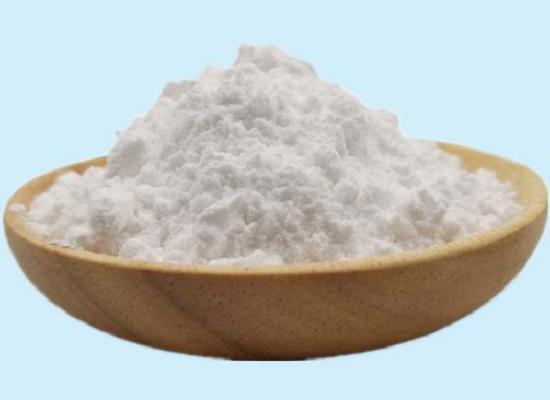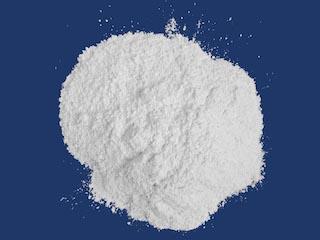(1R,4R)-4-(tert-butoxycarbonylamino)cyclopent-2-enecarboxylic acid:Synthesis,Application

Figure 1 Appearance of (1R,4R)-4-(tert-butoxycarbonylamino)cyclopent-2-enecarboxylic acid.
(1R,4R)-4-(tert-butoxycarbonylamino)cyclopent-2-enecarboxylic acid can be synthesized by two steps according to previous work [1]. Step 1: A solution of (-)-2-azabicyclo[2.2.1]hept-5-en-3-one (200g, 1.83mol) in 800ml methanol was placed into a two litre jacketed vessel. The solution was cooled to below 5°C by means of a circulator, and thionyl chloride (147ml, 2.01mol) was added dropwise to the stirred solution. After the addition was complete, stirring was continued overnight at 5°C. The reaction mixture was then concentrated under reduced pressure to yield 324g (99%) of an off white solid. A suspension of (-)-4-aminocyclopent-2-ene-l-carboxylic acid methyl ester hydrochloride (324g, 1.83mol) in 800ml of dichloromethane was stirred by means of an overhead stirrer in a 5 litre jacketed vessel. The vessel was cooled to 2°C by means of a circulator, and triethylamine (307ml, 2.2mol) was added dropwise to the reaction. Upon completion of the triethylamine addition, a solution of di-t-butyl dicarbonate (400g, 1.83mol) in 600ml of dichloromethane was added dropwise to the reaction over a period of 1.5 hours. The reaction was left stirring for a further 1 hour, after this time 500ml of water were added and the organic phase was extracted with 3 x 1 litre of 1M potassium hydrogen sulfate and 1 litre of saturated brine solution. The organic phase was dried over magnesium sulfate and solvent was removed under reduced pressure to yield 430g (98%) of an off-white solid.
Step 2: A total of five enzymes was screened to evaluate their potential for selectively hydrolysing either the cis or trans epimer. The enzymes used were: pig pancreatic lipase (PPL), Candida rugosa lipase (CCL), lipase PS, Chirazyme L9 and Chirazyme L2. In each case, 50mg of substrate was placed into a scintillation vial with 5ml of 50mM potassium phosphate buffer, pH 7 and 20mg of enzyme. All five vials were continuously agitated at 26°C in a water bath/shaker. After 18 hours all reactions were extracted with 5ml ethyl acetate. The organic extracts were dried over magnesium sulfate and analysed by GC-MS. Analysis revealed that lipase CCL gave the greatest selectivity and scale up reactions were performed using this enzyme. Of the other enzymes screened, lipase PS exhibited some degree of selectivity, Chirazyme L2 hydrolysed both epimers, and Chirazyme L9 and lipase PPL both failed to hydroiyse either epimer.
(1R,4R)-4-(tert-butoxycarbonylamino)cyclopent-2-enecarboxylic acid is a onstrained γ-Aminobutyric acid (GABA)
[2]Lloyd et al. Use of hydrolases for the synthesis of cyclic amino acids. Tetrahedron, 2004, 60(3): 717-728.
[3]Allan, R. D.; Dickenson, H. W.; Fong, J. Eur. J. Pharmacol. 1986, 122, 339–348.
[4]MackIntosh, C.; Garcia-Dominguez, D. J.; Ordonez, J. L.; Ginel-Picardo, A.; Smith, P. G.; Sacristan, M. P.; de Alava, E. Oncogene 2013, 32, 1441?51.
[5]Brownell, J. E.; Sintchak, M. D.; Gavin, J. M.; Liao, H.; Bruzzese, F. J.; Bump, N. J.; Soucy, T. A.; Milhollen, M. A.; Yang, X.; Burkhardt, A. L. Mol. Cell 2010, 37, 102?111.



